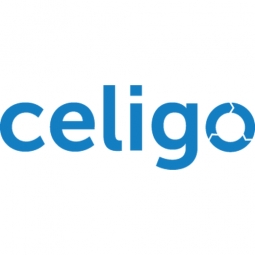Technology Category
- Application Infrastructure & Middleware - Data Exchange & Integration
- Application Infrastructure & Middleware - Middleware, SDKs & Libraries
Applicable Industries
- Consumer Goods
- Retail
Applicable Functions
- Maintenance
- Sales & Marketing
Use Cases
- Machine to Machine Payments
- Retail Store Automation
Services
- System Integration
About The Customer
Intelligentsia Coffee is an iconic American coffee roasting company and retailer based in Chicago. Founded by Doug Zell and Emily Mange in 1995, the company is a key player in the third wave coffee movement. Intelligentsia Coffee offers Direct Trade coffee varieties through their website and over a dozen coffee bars in six cities across the United States. A few years ago, the company was manually processing 200-400 daily transactions. However, with the addition of Magento, Amazon, and Shopify to their eCommerce platforms, the company experienced a significant increase in sales orders.
The Challenge
Intelligentsia Coffee, a renowned American coffee roasting company, was facing a significant challenge in managing its rapidly expanding eCommerce business. The company was using an outdated process to keep track of eCommerce sales orders, which involved the manual transfer of order batches from one application to another. On average, they were manually processing 200-400 daily transactions. However, with the addition of Magento, Amazon, and Shopify, the business was experiencing a boom in sales orders from all of their eCommerce platforms. The lack of automation meant that order information had to be downloaded, manually processed, and confirmed before being uploaded to the accounting system. This process was not only time-consuming but also prone to errors and delays. The company was looking at thousands of transactions a day, including retail transactions and other financial information such as employee files and payroll files. The manual process was a significant hindrance to the company's growth.
The Solution
To address this challenge, Intelligentsia Coffee launched an internal project in 2018 to connect their eCommerce platforms, retail transactions, and other accounting records to NetSuite. They chose Celigo for its ease of use and breadth of offerings. The company started the migration project by using Celigo’s Magento 2 – NetSuite Integration App to integrate those two applications. The results were instantaneous, with the order-to-cash process becoming fully automated. With the addition of Celigo’s Integration Apps for Amazon and Shopify, the company was able to simplify its entire eCommerce order-to-cash process. The company's retail operations also benefited from this solution. Nightly closing processes that include reconciling cash night sheets, deposits, and credit card transactions were automated. The data from their point of sales system was automatically exported using Celigo, turning a daily task into a weekly reconciliation task.
Operational Impact
Quantitative Benefit

Case Study missing?
Start adding your own!
Register with your work email and create a new case study profile for your business.
Related Case Studies.
.png)
Case Study
Improving Vending Machine Profitability with the Internet of Things (IoT)
The vending industry is undergoing a sea change, taking advantage of new technologies to go beyond just delivering snacks to creating a new retail location. Intelligent vending machines can be found in many public locations as well as company facilities, selling different types of goods and services, including even computer accessories, gold bars, tickets, and office supplies. With increasing sophistication, they may also provide time- and location-based data pertaining to sales, inventory, and customer preferences. But at the end of the day, vending machine operators know greater profitability is driven by higher sales and lower operating costs.

Case Study
Improving Production Line Efficiency with Ethernet Micro RTU Controller
Moxa was asked to provide a connectivity solution for one of the world's leading cosmetics companies. This multinational corporation, with retail presence in 130 countries, 23 global braches, and over 66,000 employees, sought to improve the efficiency of their production process by migrating from manual monitoring to an automatic productivity monitoring system. The production line was being monitored by ABB Real-TPI, a factory information system that offers data collection and analysis to improve plant efficiency. Due to software limitations, the customer needed an OPC server and a corresponding I/O solution to collect data from additional sensor devices for the Real-TPI system. The goal is to enable the factory information system to more thoroughly collect data from every corner of the production line. This will improve its ability to measure Overall Equipment Effectiveness (OEE) and translate into increased production efficiencies. System Requirements • Instant status updates while still consuming minimal bandwidth to relieve strain on limited factory networks • Interoperable with ABB Real-TPI • Small form factor appropriate for deployment where space is scarce • Remote software management and configuration to simplify operations

Case Study
How Sirqul’s IoT Platform is Crafting Carrefour’s New In-Store Experiences
Carrefour Taiwan’s goal is to be completely digital by end of 2018. Out-dated manual methods for analysis and assumptions limited Carrefour’s ability to change the customer experience and were void of real-time decision-making capabilities. Rather than relying solely on sales data, assumptions, and disparate systems, Carrefour Taiwan’s CEO led an initiative to find a connected IoT solution that could give the team the ability to make real-time changes and more informed decisions. Prior to implementing, Carrefour struggled to address their conversion rates and did not have the proper insights into the customer decision-making process nor how to make an immediate impact without losing customer confidence.

Case Study
Digital Retail Security Solutions
Sennco wanted to help its retail customers increase sales and profits by developing an innovative alarm system as opposed to conventional connected alarms that are permanently tethered to display products. These traditional security systems were cumbersome and intrusive to the customer shopping experience. Additionally, they provided no useful data or analytics.





